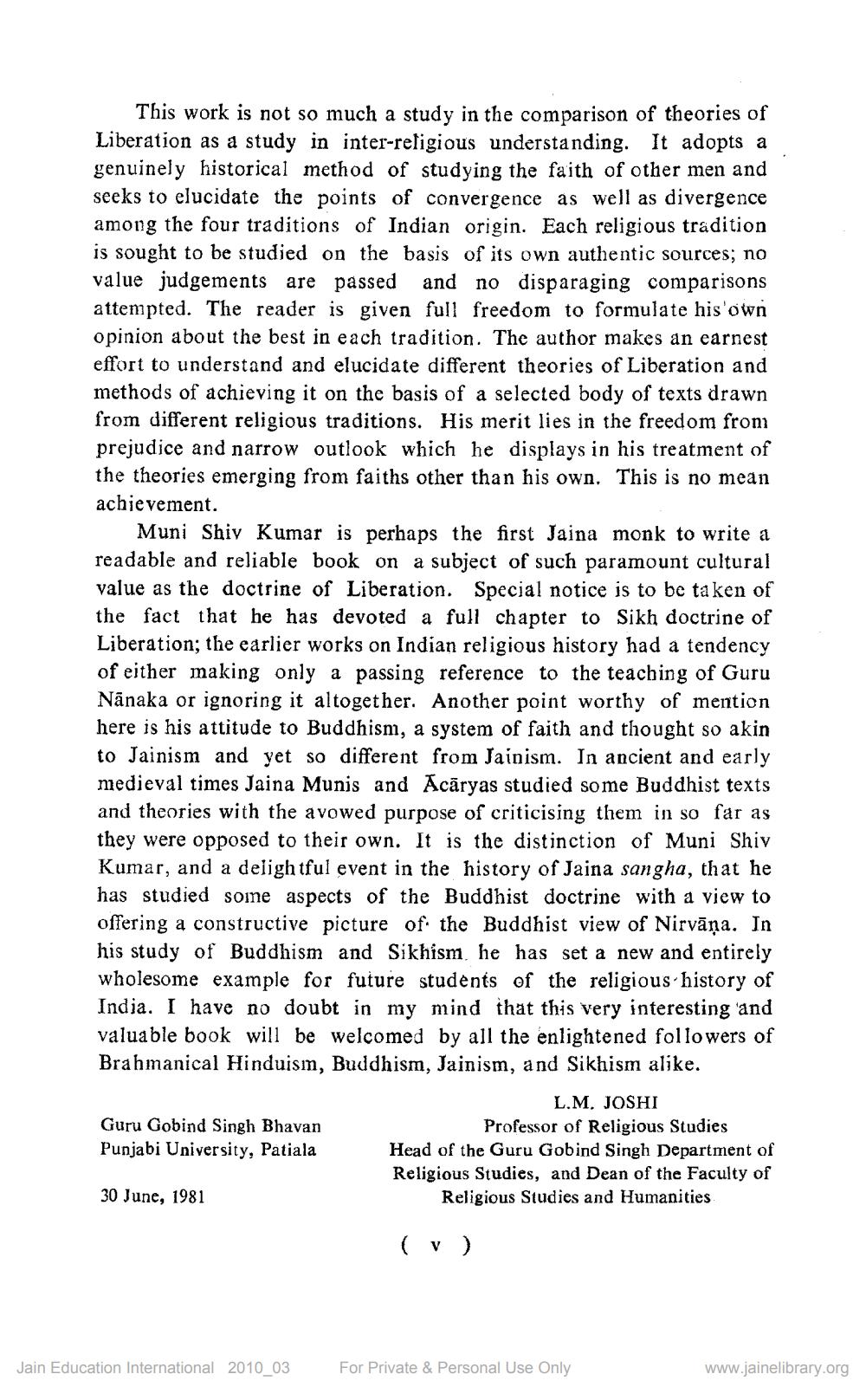Book Title: Doctrine of Liberation in Indian Religion Author(s): Shivkumarmuni Publisher: Munshiram Manoharlal Publisher's Pvt Ltd New Delhi View full book textPage 7
________________ This work is not so much a study in the comparison of theories of Liberation as a study in inter-religious understanding. It adopts a genuinely historical method of studying the faith of other men and seeks to elucidate the points of convergence as well as divergence among the four traditions of Indian origin. Each religious tradition is sought to be studied on the basis of its own authentic sources; no value judgements are passed and no disparaging comparisons attempted. The reader is given full freedom to formulate his own opinion about the best in each tradition. The author makes an earnest effort to understand and elucidate different theories of Liberation and methods of achieving it on the basis of a selected body of texts drawn from different religious traditions. His merit lies in the freedom from prejudice and narrow outlook which he displays in his treatment of the theories emerging from faiths other than his own. This is no mean achievement. Muni Shiv Kumar is perhaps the first Jaina monk to write a readable and reliable book on a subject of such paramount cultural value as the doctrine of Liberation. Special notice is to be taken of the fact that he has devoted a full chapter to Sikh doctrine of Liberation; the earlier works on Indian religious history had a tendency of either making only a passing reference to the teaching of Guru Nanaka or ignoring it altogether. Another point worthy of mention here is his attitude to Buddhism, a system of faith and thought so akin to Jainism and yet so different from Jainism. In ancient and early medieval times Jaina Munis and Acāryas studied some Buddhist texts and theories with the avowed purpose of criticising them in so far as they were opposed to their own. It is the distinction of Muni Shiv Kumar, and a delightful event in the history of Jaina sangha, that he has studied some aspects of the Buddhist doctrine with a view to offering a constructive picture of the Buddhist view of Nirvāņa. In his study of Buddhism and Sikhism. he has set a new and entirely wholesome example for future students of the religious history of India. I have no doubt in my mind that this very interesting and valuable book will be welcomed by all the enlightened followers of Brahmanical Hinduism, Buddhism, Jainism, and Sikhism alike. Guru Gobind Singh Bhavan Punjabi University, Patiala 30 June, 1981 Jain Education International 2010_03 L.M. JOSHI Professor of Religious Studies Head of the Guru Gobind Singh Department of Religious Studies, and Dean of the Faculty of Religious Studies and Humanities ( v ) For Private & Personal Use Only www.jainelibrary.orgPage Navigation
1 ... 5 6 7 8 9 10 11 12 13 14 15 16 17 18 19 20 21 22 23 24 25 26 27 28 29 30 31 32 33 34 35 36 37 38 39 40 41 42 43 44 45 46 47 48 49 50 51 52 53 54 55 56 57 58 59 60 61 62 63 64 65 66 67 68 69 70 71 72 ... 240
